The pursuit of the ‘preferred answer’ starts early in life. Any two-year old knows to ask Dad after Mom says, “No.” In forestry and the forecasting of timber markets, comparing approaches, like getting a second opinion, strengthens our collective understanding, even while exposing uncomfortable truths. To start, results must make sense, and they must align with the strongest, available, verified facts.
Consider the accumulation of forest supplies in the U.S. South, where the region now has a higher baseline forest inventory than before the recession. Here I focus on the dynamics of planting (supply) and harvesting (demand) trees, which drive the forest cycle in active, private markets for wood and timber.
Planting Trees
The age structure of today’s forest inventory reflects the timing and responses of past policy and market surges and flows (Figure 1). The first surge in planting in the 1950’s corresponds with the Soil Bank Program, and the second wave of activity in the 1980’s ties to the Conservation Reserve Program (CRP), in which the USDA encouraged landowners to plant trees on former fields and agriculture land. Timber rotations in the South average 25-30 years, and the recession affected the planting cycle by aligning with the arrival (the “echo”) of the CRP-subsidized plantations from the 1980s. The effects magnify each other, as a major decrease in harvesting activity fed already strong inventories planted 30 and 60 years ago as part of federal incentive programs.
Figure 1. Southern Tree Planting, All States and Ownerships
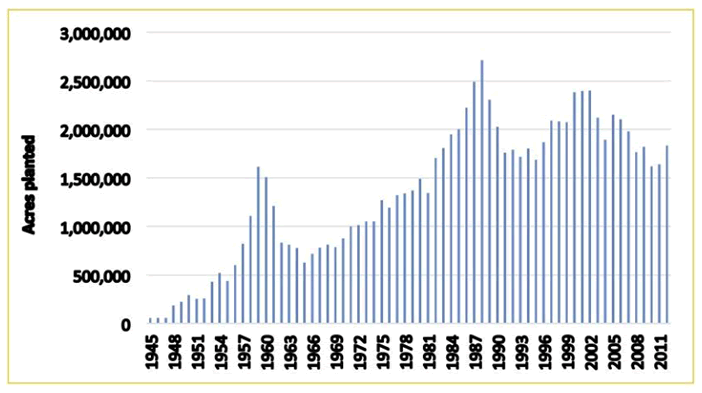
Figure: Forisk Research Quarterly, Q3 2015; Data: A Statistical History of Tree Planting in the South 1928 to 2012, G. Hernandez and R Harper USDA Forest Service.
What does this mean? It’s the Baby Boomer Generation of tree growth. The demographics and population dynamics of the forest have a pattern. Any projection that fails to account for the “pig in the python” of tree planting fails basic reason. We planted a lot of trees, and we deferred a lot of harvesting. And tree growth, like money in a savings account, compounds.
Case Study: Mississippi
The implications vary by local market. While Georgia and Texas with sawmills closer to end markets have seen harvesting increase along with improved housing, states such as Louisiana, Mississippi and Alabama, with smaller populations and less home construction, have lagged. As an example, let’s look at Mississippi more closely.
According to U.S. Forest Service data, Mississippi had about 108 million tons of private pine sawtimber inventory on private timberland in 1977. This pine sawtimber inventory grew to about 135 million tons by 2007, to 180 million tons by 2011, and to 258 million tons by 2015. Is this reasonable for estimated pine grade inventories to have increased 91% (123 million tons, or 15 million tons per year) over an eight-year period?
Planting (supply): Mississippi significantly increased its participation in the CRP program in the late 1980s, going from 81 thousand enrolled acres in 1986 to over 701 thousand acres by 1990, an annual growth rate exceeding 50%. Many of these acres helped put a lot of new trees in the ground.
Harvesting (demand): Mississippi markedly reduced harvest levels during the recession (Figure 2). In the decade prior to the recession, Mississippi averaged over 16 million tons of pine grade annually. Following the recession, average harvest levels declined by nearly half, implying a harvest deferral of over 7.7 million tons per year.
Figure 2. Annual Pine Grade Use and Implied Harvest Deferral, Mississippi (tons)
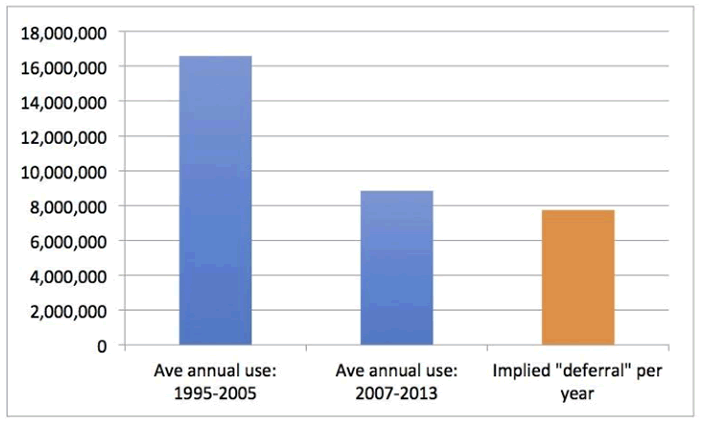
Sources: U.S. Forest Service TPO; Forisk
So what do the physical facts associated with deferred harvests imply for total forest growth in Mississippi? Assume we averaged 7.7 million tons of deferred harvest per year from 2007 through 2016. And like money in a savings account, deferred harvests can grow at a compounded rate (Figure 3). Delayed harvests, juiced by previous planting and “in growth” (younger trees moving up through the product classes), and allowed to compound provides a physical story. U.S. Forest Service data confirm forest growth rates of 4% or 6% or 8% or more, depending on the specie and timeframe. At 8%, we have a story growing Mississippi’s pine grade inventories at 15 million tons per year.
Figure 3. Implied Accumulation of Deferred Pine Grade Harvest, Mississippi (tons)
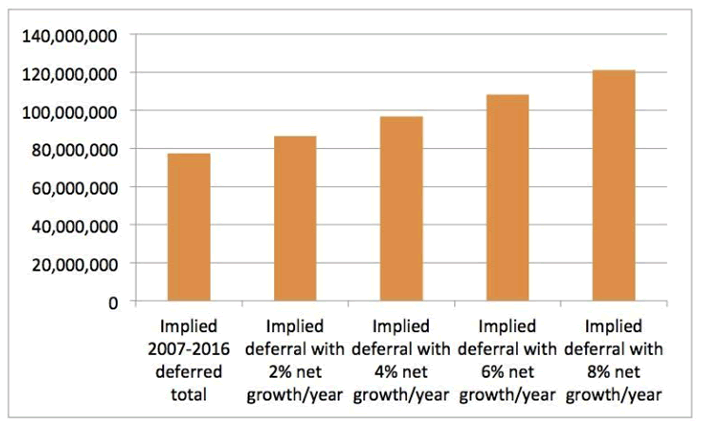
Source: Forisk
For the South, “winning” has been a catch-22 in the near term. While pine sawtimber stumpage prices on timberland investments have stalled or lagged to date, the forest industry has responded to this accumulation of forest supplies. Aggressively. This growing forest acts like a magnet, attracting billions of dollars in capital investment and new firms to the South, including states such as Mississippi. Long run, this investment flow positions the South as the leading producer of forest products in the United States for decades.
This content may not be used or reproduced in any manner whatsoever, in part or in whole, without written permission of LANDTHINK. Use of this content without permission is a violation of federal copyright law. The articles, posts, comments, opinions and information provided by LANDTHINK are for informational and research purposes only and DOES NOT substitute or coincide with the advice of an attorney, accountant, real estate broker or any other licensed real estate professional. LANDTHINK strongly advises visitors and readers to seek their own professional guidance and advice related to buying, investing in or selling real estate.




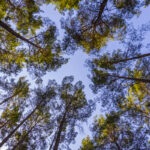

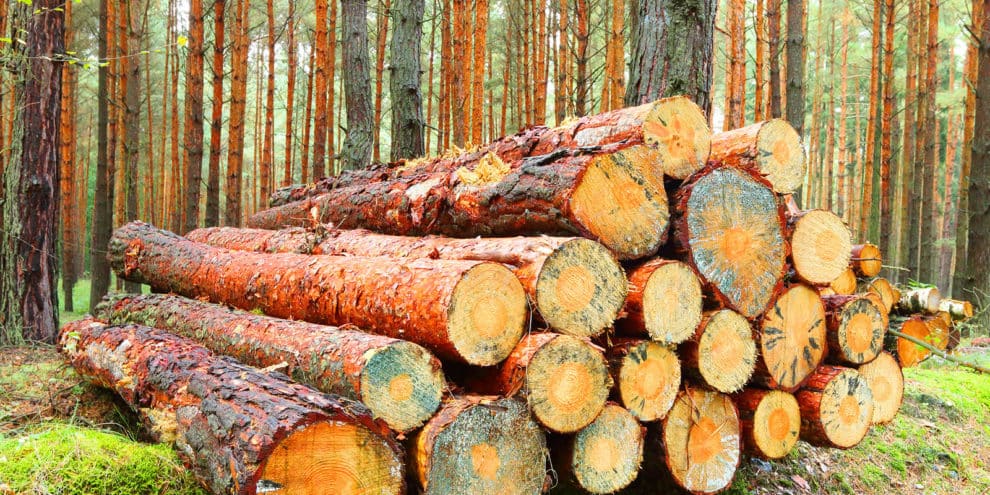

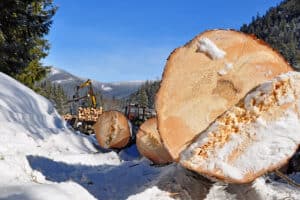
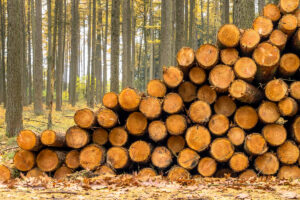
Add Comment